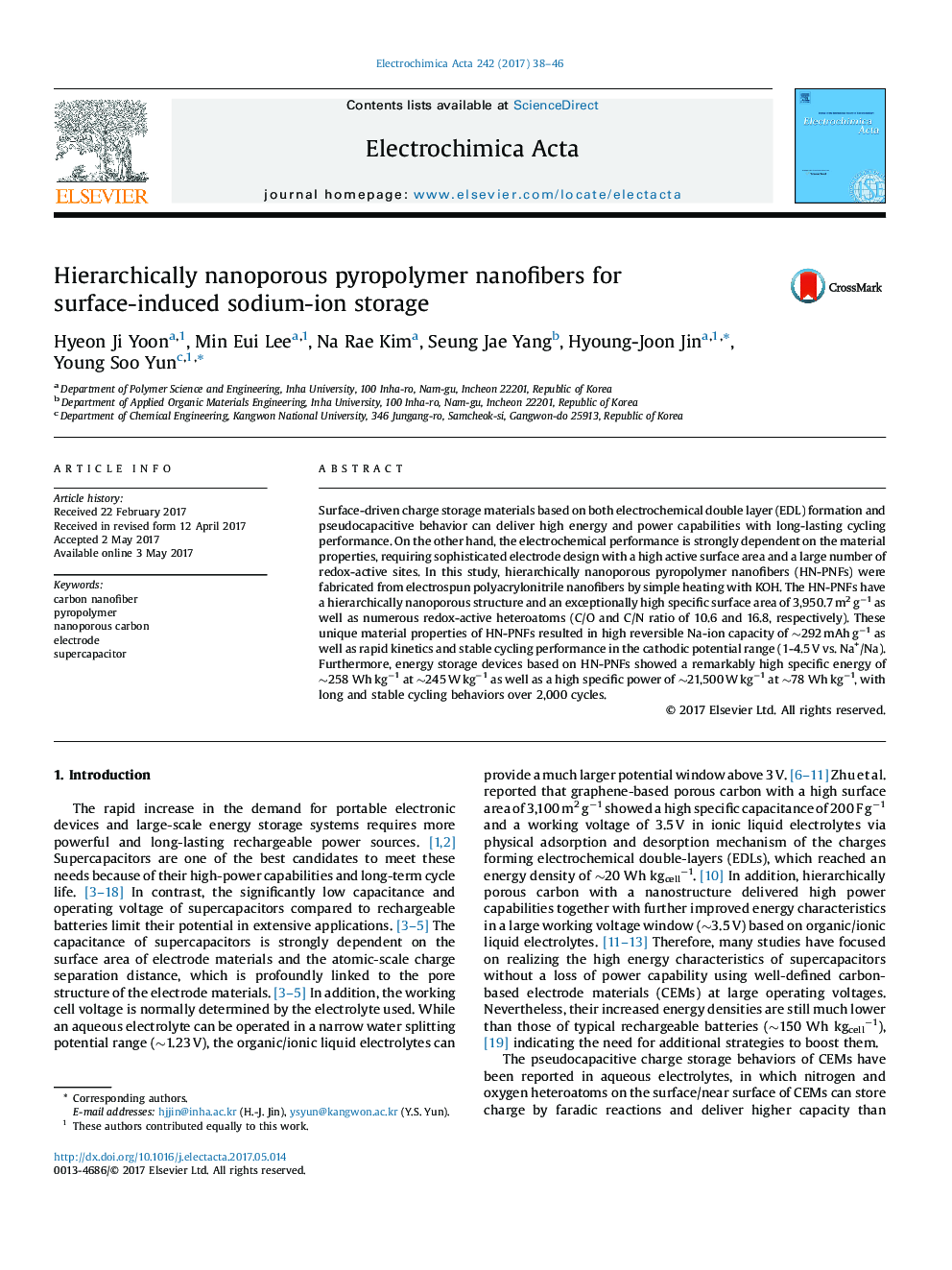| Article ID | Journal | Published Year | Pages | File Type |
|---|---|---|---|---|
| 6471153 | Electrochimica Acta | 2017 | 9 Pages |
â¢Hierarchically nanoporous pyropolymer nanofibers (HN-PNFs) were fabricated.â¢HN-PNFs have a high specific surface area of â¼3,950 m2 gâ1 and numerous heteroatoms.â¢HN-PNFs exhibit high capacities of â¼292 mAh gâ1 and great rate/cycling performances.â¢High energy (258 Wh kgâ1) and high power (21,500 W kgâ1) are achieved.
Surface-driven charge storage materials based on both electrochemical double layer (EDL) formation and pseudocapacitive behavior can deliver high energy and power capabilities with long-lasting cycling performance. On the other hand, the electrochemical performance is strongly dependent on the material properties, requiring sophisticated electrode design with a high active surface area and a large number of redox-active sites. In this study, hierarchically nanoporous pyropolymer nanofibers (HN-PNFs) were fabricated from electrospun polyacrylonitrile nanofibers by simple heating with KOH. The HN-PNFs have a hierarchically nanoporous structure and an exceptionally high specific surface area of 3,950.7 m2 gâ1 as well as numerous redox-active heteroatoms (C/O and C/N ratio of 10.6 and 16.8, respectively). These unique material properties of HN-PNFs resulted in high reversible Na-ion capacity of â¼292 mAh gâ1 as well as rapid kinetics and stable cycling performance in the cathodic potential range (1-4.5 V vs. Na+/Na). Furthermore, energy storage devices based on HN-PNFs showed a remarkably high specific energy of â¼258 Wh kgâ1 at â¼245 W kgâ1 as well as a high specific power of â¼21,500 W kgâ1 at â¼78 Wh kgâ1, with long and stable cycling behaviors over 2,000 cycles.
Graphical abstractHierarchically nanoporous pyropolymer nanofibers (HN-PNFs) fabricated from electrospun polyacrylonitrile nanofibers by simple heating with KOH exhibited high electrochemical performance for Na-ion storage.Download high-res image (158KB)Download full-size image
